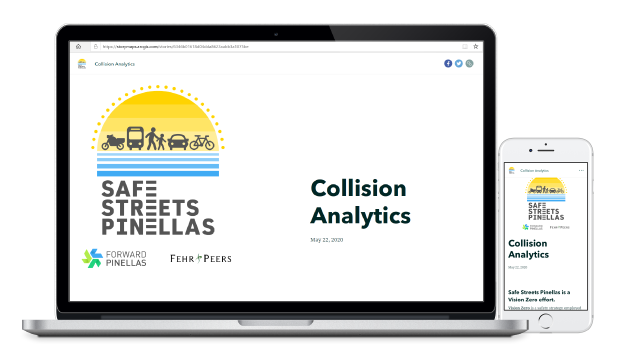ABOUT
Safe Streets Pinellas is a collaborative effort to create a transportation system that is safe for everyone. Our goal is for no one to be killed or seriously injured using the roadways in Pinellas County.
On average, two people are killed or seriously injured each day in Pinellas County. With so many people killed and more seriously injured last year on our roadways, assigning blame to individuals isn’t solving our transportation crisis. Forward Pinellas started Safe Streets Pinellas, a Vision Zero safety effort, to address this.
Vision Zero, a strategy employed by communities across the country and the world, radically redefines the idea of what transportation safety means: that not one person should be killed or seriously injured using our roadways.
VISION ZERO EFFORT & SAFE STREETS PINELLAS
In a Vision Zero effort like Safe Streets Pinellas, diverse stakeholders must come together to think about and work toward creating a transportation system that is safe for everyone. The success of Safe Streets Pinellas depends on community involvement and collaboration with partner agencies.
WORKING TOGETHER
Over the last year, Forward Pinellas studied where we’re seeing concerns on our roadways and why these crashes are happening. We’ve also held several demonstration projects to test ways we could make our roads safer, such as exploring new technology and educational outreach. Now we’ve created an Action Plan that will guide our steps as we work toward ensuring everyone is safe on our roadways in Pinellas County.

STORY MAP
One of the first steps in the process of making our streets safer is understanding more about our problems. Detailed collision analysis helps us to learn more about what is happening on our roadways. Many of our killed our seriously injured crashes (KSIs) involve vulnerable users – pedestrians, bicyclists, or motorcyclists. We started the development of the Safe Streets Pinellas Action Plan by looking at factors such as where the collisions are happening (such as at an intersection), what time of day or year they occur, the ages of those involved, and if they include a Driver Under the Influence (DUI) violation, to help us better understand what is happening and how we can address the problems. Early in our process, we put together a Story Map that helps us dive deeper into where our more serious problems may be. If you’re interested in data and details, we encourage you to explore the Story Map.


